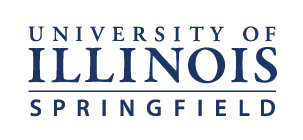The University of Illinois Springfield is celebrating 25 years as a pioneering leader in online learning. In 1998, UIS launched its first online program with the goal of giving students an opportunity to learn in a flexible manner. At the time, UIS was one of only a few institutions that offered online education in the United States.
“UIS led in many ways,” said Ray Schroeder, an emeritus professor who helped start UIS’ first online programs. “Individual faculty members had experimented with online segments in their classes in the years before we launched fully online classes and degrees.”
In 1997, UIS received funding from UI-Online, a university-wide initiative to use the internet to extend educational and public service programs to a broader audience. Schroeder worked with Burks Oakley from the University of Illinois System to coordinate and gain funding for UIS’ first online degree programs. In its first year, UIS served 30 students online. By the spring of 1999, the management information systems degree was fully available online.
This was not the first time UIS had offered distance learning courses. In the early 1990s, the campus offered correspondence courses that were supported by weekly newspaper feature articles in place of lectures. Later, UIS had a very active radio sideband delivery system through which a number of classes were offered. UIS provided lectures that were sent out via the sideband of WUIS public radio.
However, the internet revolution created an opportunity to provide community college graduates and working adults access to an educational experience unlike that offered by any preceding technology.
“The internet, with its capability of communication-rich, ‘any time, any place’ learning was something else,” said former UIS Provost Harry Berman in a 2009 column published in The State Journal-Register. “UIS faculty jumped on board because providing access for adult learners through this new medium is an extension of what we have been doing for 30 years.”
In the mid-2000s, UIS received a $1.21 million grant from the Alfred P. Sloan Foundation to expand graduate and undergraduate online degree programs. By the fall of 2008, a total of 1,200 UIS students were enrolled in 16 fully online degree programs, and half of UIS students were taking at least one online class.
The Center for Online Learning, Research & Service (COLRS) was founded in 2009 by Schroeder and became a fully approved Illinois Board of Higher Education Center. COLRS growth accelerated under the leadership of Vickie Cook, who now serves as UIS vice chancellor for enrollment and retention management. Cook remains involved in the field by providing professional development to faculty on ways to engage students through distance education technologies.
Today, Michele Gribbins leads COLRS and continues to work with UIS faculty to strengthen online courses, as the number of students taking online classes grows.
“This semester, we have over 1,600 students enrolled in fully online programs, and they represent 39 percent of the UIS student body,” Gribbins said. “Over 27 percent of our online students are located outside of Illinois, with students representing 15 countries beyond the United States.”
UIS now offers 52 online undergraduate and graduate programs in business administration, computer science, communications, history, management information systems, criminology and criminal justice and political science.
In its 25-year history, UIS has received numerous awards for excellence in online education from organizations, such as the University Professional and Continuing Education Association (UPCEA), the Online Learning Consortium and the Illinois Council on Continuing Higher Education (ICCHE).
“We have a plethora of awards and citations of recognition for our leadership,” Schroeder said. “The national leadership led to a number of very large grants from notable foundations, including the Alfred P. Sloan Foundation and partnerships in grants from the Bill and Melinda Gates Foundation.”
The evolution of technology has been one of the driving factors behind the growth of online learning at UIS. According to Gribbins, audio podcasts were a popular method in the mid-2000s to deliver lecture content. Now, many faculty are delivering pre-recorded lecture content via video using simple office webcams or more sophisticated setups like COLRS’ green screen or light board studios.
“Web-conferencing technologies like Zoom are used by some faculty to host synchronous activities with students online,” Gribbins said. “The devices that students use to engage with online courses have also evolved to mobile devices and apps.”
One new technology of interest is ChatGPT and other artificial intelligence tools. COLRS is paying close attention to developments in how these tools are being used in higher education.
“We have weekly sessions among our faculty and staff to discuss and share ideas on the use and impact of artificial intelligence tools on the learning process,” Gribbins said. “Faculty are incorporating the use of artificial intelligence tools in some of their classes’ activities.”
Schroeder, who is considered a national expert in online learning, remains involved in exploring the latest online learning technologies as a UPCEA senior fellow. Still, he said, 25 years ago, it would have been hard to imagine the technological revolution we’re seeing today.
“Generative AI was not on the horizon for most back then,” Schroeder said. “We were simply trying to use the new internet technology to reach students who couldn’t come to campus.”



